Available at: https://ssrn.com/abstract=5115277
Abstract:
This Article provides the first comprehensive analysis of the intersection between decentralized autonomous organizations (DAOs) and American bankruptcy law. DAOs are blockchain-based entities that enable individuals to pursue common goals using decentralized decision-making and automated governance. Since their recent emergence, DAOs have proliferated dramatically—with over 20,000 organizations managing over $20 billion in assets and engaging in activities ranging from investment management to real estate and even attempting to purchase historic copies of the U.S. Constitution. Yet like any other organization, DAOs can fail, creating an urgent need to understand what happens when unstoppable code meets immovable bankruptcy law.
Our investigation unfolds along three interconnected lines of inquiry. First, we observe DAOs through a novel analytical prism, moving beyond conventional technological and organizational taxonomies to uncover their insolvency-relevant attributes. Second, drawing on these findings and the 2024 bankruptcy filing of HectorDAO, we posit that the core ideals of DAOs—decentralization, automation, rejection of intermediaries, and resistance to state law—fundamentally conflict with court-supervised insolvency proceedings, forcing these organizations to either compromise their ethos or forgo voluntary bankruptcy protection. Third, recognizing this tension, we theorize a “decentralized autonomous bankruptcy” framework for DAOs. This thought experiment, which we call BrokeDAO, reveals the potential for blockchain technology to create innovative solutions for debt resolution. Yet, it also exposes the inherent limitations of attempting to replicate the comprehensive protections of bankruptcy purely through private ordering.
Studying the interface between DAOs and bankruptcy law yields substantial contributions to both fields. While the literature on digital assets remains overwhelmingly focused on regulatory questions, our research offers essential private law insights that will prove crucial during inevitable future market downturns. Moreover, viewing bankruptcy law through the lens of DAOs underscores the singularity of bankruptcy’s centralized and compulsory framework and its inescapable relevance in the crypto ecosystem.
Commentary:
You can't go wrong as an academic writing about crypto and bankruptcy, but it certainly would be helpful for regular practitioners for there to be more about cryptocurrency in consumer bankruptcy cases.
With proper attribution, please share this post.
To read a copy of the transcript, please see:

Blog comments